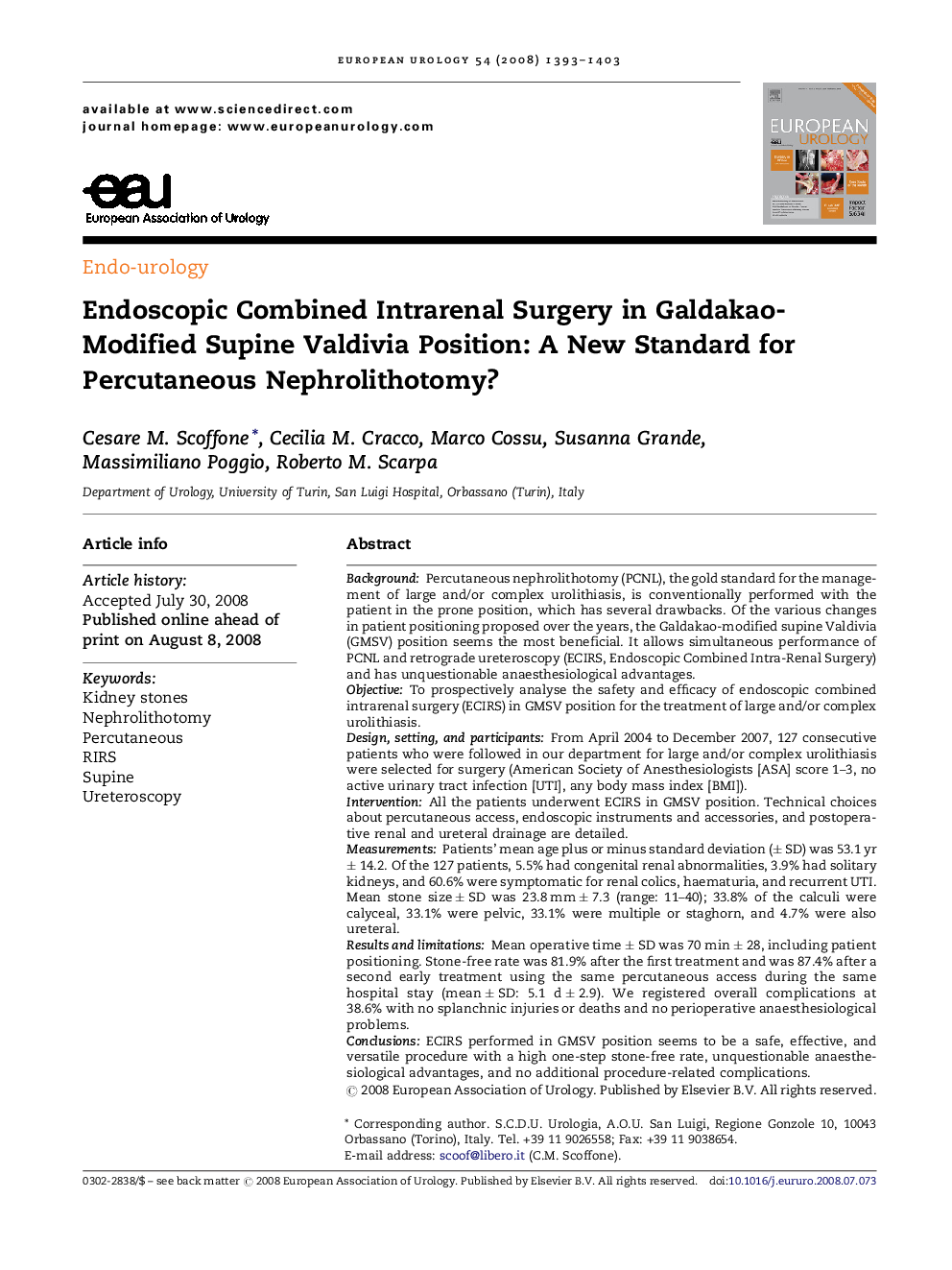| کد مقاله | کد نشریه | سال انتشار | مقاله انگلیسی | نسخه تمام متن |
|---|---|---|---|---|
| 3928756 | 1253207 | 2008 | 11 صفحه PDF | دانلود رایگان |

BackgroundPercutaneous nephrolithotomy (PCNL), the gold standard for the management of large and/or complex urolithiasis, is conventionally performed with the patient in the prone position, which has several drawbacks. Of the various changes in patient positioning proposed over the years, the Galdakao-modified supine Valdivia (GMSV) position seems the most beneficial. It allows simultaneous performance of PCNL and retrograde ureteroscopy (ECIRS, Endoscopic Combined Intra-Renal Surgery) and has unquestionable anaesthesiological advantages.ObjectiveTo prospectively analyse the safety and efficacy of endoscopic combined intrarenal surgery (ECIRS) in GMSV position for the treatment of large and/or complex urolithiasis.Design, setting, and participantsFrom April 2004 to December 2007, 127 consecutive patients who were followed in our department for large and/or complex urolithiasis were selected for surgery (American Society of Anesthesiologists [ASA] score 1–3, no active urinary tract infection [UTI], any body mass index [BMI]).InterventionAll the patients underwent ECIRS in GMSV position. Technical choices about percutaneous access, endoscopic instruments and accessories, and postoperative renal and ureteral drainage are detailed.MeasurementsPatients’ mean age plus or minus standard deviation (± SD) was 53.1 yr ± 14.2. Of the 127 patients, 5.5% had congenital renal abnormalities, 3.9% had solitary kidneys, and 60.6% were symptomatic for renal colics, haematuria, and recurrent UTI. Mean stone size ± SD was 23.8 mm ± 7.3 (range: 11–40); 33.8% of the calculi were calyceal, 33.1% were pelvic, 33.1% were multiple or staghorn, and 4.7% were also ureteral.Results and limitationsMean operative time ± SD was 70 min ± 28, including patient positioning. Stone-free rate was 81.9% after the first treatment and was 87.4% after a second early treatment using the same percutaneous access during the same hospital stay (mean ± SD: 5.1 d ± 2.9). We registered overall complications at 38.6% with no splanchnic injuries or deaths and no perioperative anaesthesiological problems.ConclusionsECIRS performed in GMSV position seems to be a safe, effective, and versatile procedure with a high one-step stone-free rate, unquestionable anaesthesiological advantages, and no additional procedure-related complications.
Journal: European Urology - Volume 54, Issue 6, December 2008, Pages 1393–1403